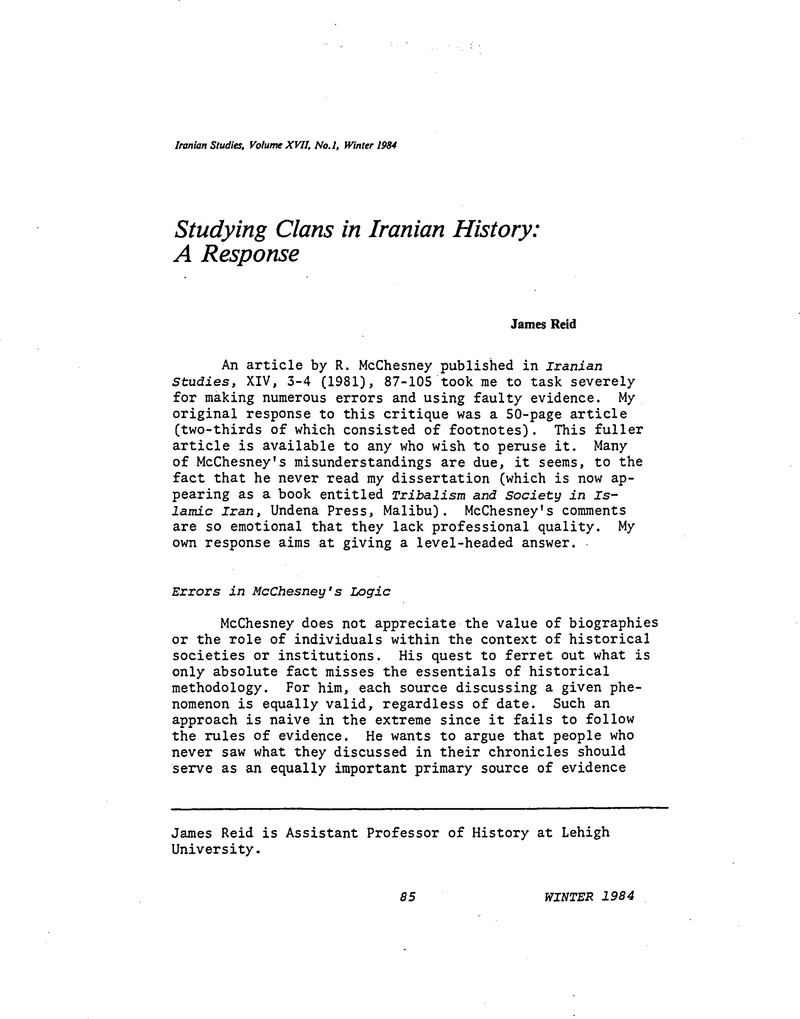No CrossRef data available.
Article contents
Studying Clans in Iranian History: A Response
Published online by Cambridge University Press: 01 January 2022
Abstract

- Type
- Review Articles
- Information
- Copyright
- Copyright © Association For Iranian Studies, Inc 1984
References
Notes
1. Krader, Lawrence, Social Organization of the Mongol-Turkic Pastoral Nomads (Mouton, the Hague, 1963).Google Scholar Wolfgang König, Die Achal Teke, Akademie Verlag, 1962 gives a valuable case study of a pastoral society which was not “nomadic.”
2. Duby, G., Rural Economy and Country Life in the Medieval West, tr. Postan, Cynthia (Columbia: University of South Carolina Press, 1968), pp. 5–6.Google Scholar
3. Strayer, Joseph, Medieval Statecraft and the Perspectives of History, Bisson, T. N. and Benton, J. F. (eds.) (Princeton, 1971), pp. 63–65Google Scholar; Brown, E. A. R., “The Tyranny of a Construct: Feudalism and Historians of Medieval Europe,” American Historical Review 79 (1974), 1063–1088.CrossRefGoogle Scholar
4. al-Dīn, Rashīd, Jāmiᶜ al-Tavārīkh (Tehran: Iqbāl, 1338), pp. 53, 406Google Scholar; ᶜAtā Malik-i Juvaynī, The Tārīkh-i Jaḥān-Gushā (Leiden: Brill, 1912), pp. 130, 132Google Scholar; Petrushevsky, McChesney's source, drew his own information from Pelliot, P., notes sur l'histoire de la horde d'or (Paris: Adrien-Maisonneuve, 1949), p. 203.Google Scholar
5. Haenisch, E., Wörterbuch Zu Manghol un Niuca Tobca'an (Yüan-Ch'ao Pi-Shih) Geheime Geschichte der Mongolen (Wiesbaden: Franz Steiner Verlag, 1962), p. 120.Google Scholar Doerfer, G., Türkische und Mongolische Elemente im Neupersischen (Wiesbaden: Franz Steiner Verlag, 1963), I, pp. 182–186.Google Scholar
6. The longer original article deals with these problems.
7. Reid, J., Tribalism and Society in Islamic Iran, 1500-1629, Ph.D. Dissertation, UCLA, Los Angeles, 1978.Google Scholar
8. Doerfer, G., Türkische und Mongolische Elemente im Neupersischen, II. 89-90 for āq saqāl. Iskandar Beg, Tārīkh-i ᶜĀlam Āra-yi ᶜAbbāsī, p. 222.Google Scholar


